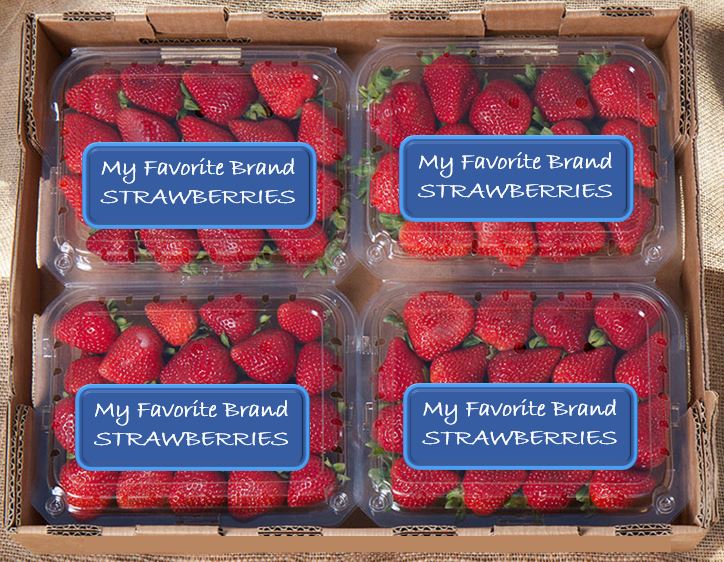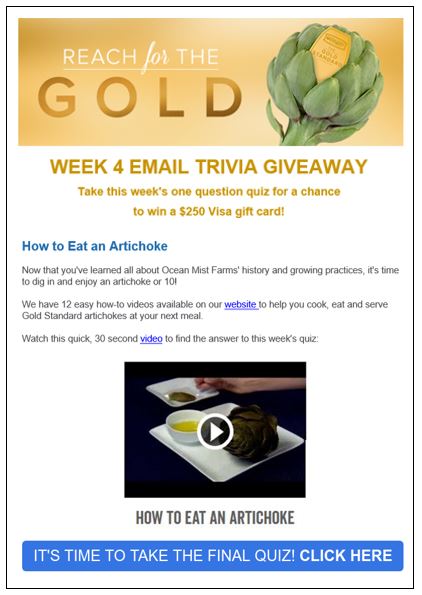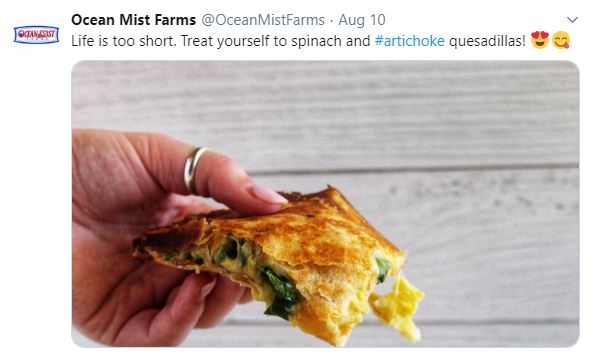Steve Lutz recently wrote an article about brand marketing for The Packer “Three Major Trends That Moved the Produce Industry.” In the article, Lutz writes that he believes, from a sales and marketing standpoint, there have been three key trends over the last 25 years:
- Generic commodities were replaced by new varieties, but proprietary brands will control the future.
- Growers have gone from being data blind to become full category partners with complete access to a suite of supermarket sales metrics.
- Bulk items are being replaced by packaged products.
From my vantage point as a consumer of produce and a marketer of AgTech solutions for the produce industry, I agree, and Lutz explains his perspectives on each of these three trends in more detail in the article. I’d like to zero in on how these changes are impacting brand marketing.
Produce Brand Marketing Then and Now
Thinking back to my youth, I always enjoyed going grocery shopping with my mom. Of course, part of my motivation was to see what items I could convince her to put into the shopping cart. (I mean, I didn’t want HER to pick out what candy bars or sugar cereals I was going to eat.) So, I spent a fair amount of time in grocery stores and we ate a fair amount of fruits and vegetables so I spent a lot of time in that part of the store.
Let me ask you though, what brands of produce do you remember from your childhood? How about this short quiz?
Bananas=
Pinapples=
Citrus=
That’s a short test huh? If you’re like me, your answers are Chiquita, Dole and Sunkist. What’s interesting to me is that those are the only three produce brands I remember from my childhood. Strawberries were bulk. Lettuce was bulk. Celery was bulk. For the most part, produce was produce. Most everything was a commodity.
Today, however, things are different, and your answers might include the following:
Strawberries = Driscoll’s, Naturipe, Foxy or Cal Giant
Bananas = Chiquita, Dole
Iceberg Lettuce = Ocean Mist, Tanimura & Antle, Fresh Express, Foxy or Dole
Celery = Duda (They’ve kind of cornered the market, at least at my grocery store)
Artichokes = Ocean Mist (They’re almost synonymous with “artichoke.”)
Why Have Things Changed?
In his article, Lutz explains “The new investments being made now are by individual grower-shipper companies that are highly motivated to differentiate their organizations through packaging, branding, product innovation and proprietary products. For example, generic apple promotions transitioned to highlighting specific varieties like Honeycrisp, Jazz and Envy, etc. Citrus sales were reinvigorated by Clementines.”
I spent a lot of time in the produce department when I go grocery shopping and I have preferred brands. Yes, some of them are customers of ours, but I’ve also found that some brands have consistently better produce (like our customers! <smile>).
Other shoppers must think I’m crazy when I examine clamshells of strawberries from different suppliers, turning them over, looking for juice or over-ripeness or while I move around heads of lettuce to get to one from my favorite brand (you know who you are) but, because of their freshness and quality, I’m becoming a brand loyalist.
Attributes of a Brand Loyalist
What are some of the attributes of a brand loyalist? For one, we’re often willing to pay a bit more because we find value in the (perceived) quality superiority. Secondly, we tend to talk up the brand. (Yes, I’m that unpleasant party guest that recommends brands of strawberries over dinner.)
An article in BluLeadz states “When customers develop a sense of brand loyalty, they’re building an emotional connection to a business. Not only do they feel like they belong, but they also get excited to represent a company in some way, as a fan and an advocate.”
The BluLeadz article lists 23 brands with very high loyalty including Apple, Amazon, Lululemon, Ikea, Dunkin (more of an east coast thing) and Starbucks. (My personal favorite, however, is #18 “Star Trek”!) (No produce suppliers are included.)
When it comes to produce brand marketing, have we reached that level of brand loyalty yet? Are people wearing t-shirts with pictures of strawberry clamshells on them? Not quite. But, as Lutz alludes, perhaps we’re not far away.
Building the Brand
Lutz points out that things like TV, radio or general media print ads aren’t really cost effective for most produce brands. They don’t necessarily know where and when their brands are going to be displayed at stores. But he cites other methods, such as social media, where brands can connect directly to consumers to create differentiation and, ultimately, loyalty.
One produce supplier that I follow that I think has done a really good job of brand marketing is Ocean Mist. They recently ran what I felt was a very effective email campaign promoting their artichokes. One of the emails was an instructional video on how to eat them. (Turns out I apparently was doing this wrong.)
Would most people be able to differentiate an Ocean Mist artichoke from another supplier? Not likely, but if you see an Ocean Mist sticker on one – and you’ve seen their marketing campaigns – you’re likely to put one and one together. More than that, their campaign helps to increase demand for artichokes by presenting more ways to cook and consume them.
Brand Marketing is Not Smoke and Mirrors
When it comes down to brand marketing and loyalty, the product has got to be both consistent and better than competitors. For produce this means it has to be fresh. If you buy a brand of strawberries and take them home and find that the next day they’ve turned to mush, you’re not going to be loyal to that brand. (In fact, you may very quickly become the opposite, a brand detractor.)
That’s where Zest Labs comes in. We help suppliers differentiate their produce by helping to ensure delivered freshness. We can help a berry provider to know that the berries they’re shipping to a grocery store will have sufficient freshness on the shelf and for the consumer to enjoy at home – always a superior experience.
And, when you always have a superior experience, you become a brand loyalist.
What produce company do you think does a good job of brand marketing? Email me at kpayne@zestlabs.com and let me know!




